Baby Jesus Had 3 Fairy Godmothers.
Baby Jesus had 3 fairy godmothers.


Anonymous Follower of Giotto (Neapolitan School)
The Adoration of the Magi
Italy (1343)
Tempera and Ground Gold on Wood
Overall, with engaged frame, 26 1/8 x 18 3/8 in. (66.4 x 46.7 cm); painted surface, including tooled border, 21 3/8 x 15 in. (54.3 x 38.1 cm).
The Metropolitan Museum of Art, Robert Lehman Collection
I have no idea why three very tiny Black women are there, but I like it. Notice the absence of the Black King; Italian adoration paintings seem less likely to feature a Black King than those from the Netherlands, Germany, and Belgium.
Also, this is one of the paintings I come across when doing random searches and slogging through huge piles of information-the fact that these three Black women are there is not tagged or marked in any way in the database. I can’t find any more information or writing about this painting. It is attributed to an anonymous painter of the Neapolitan school, and I suppose it will remain a mystery.
More Posts from Bookherd and Others
Well, I know what I'm listening to today.

"The Best Indigenous Music of 2013" | Revolutions Per Minute
#DecolonizeYourPlaylist

Also, here’s a video version with sound.
Free "Fast Runner"! Thanks, Internets!





Atanarjuat; the Fast Runner - the first feature film ever to be written, directed and acted entirely in Inuktitut.
Available streaming or download here (along with the other two of the Fast Runner trilogy).
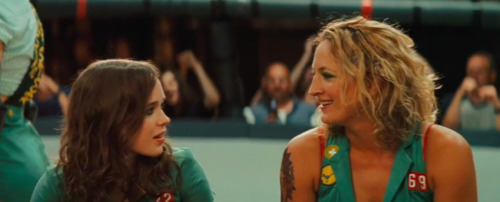



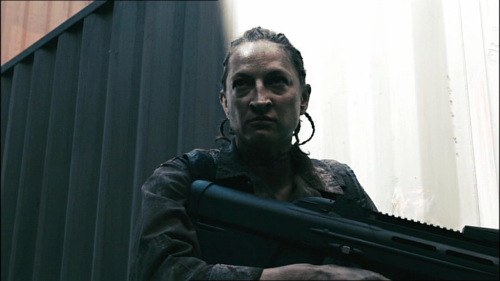
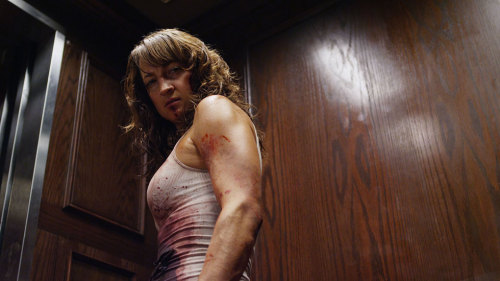
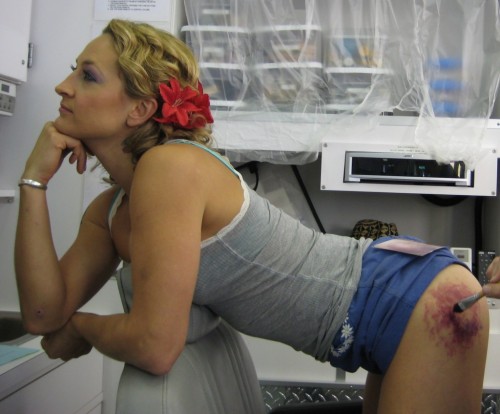
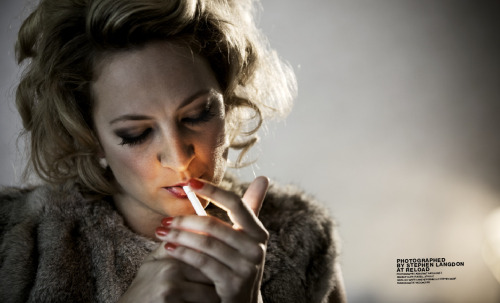
Zoë Bell is a New Zealand stuntwoman and actress. Some of her most notable stunt work includes doubling for Lucy Lawless on Xena: Warrior Princess and for Uma Thurman in Kill Bill.
As an actress, she has appeared both on television and in feature films and also starred in the web series Angel of Death. Other works include : Oblivion, Death Proof, Kill Bill, Gamer, Inglorious Bastards, Whip It! and Django Unchained.










The Last Bookstore in downtown L.A., California’s largest independent bookseller.
SAINT NICHOLAS WAS BLACK.




Various Artists
Saint Nicholas (Nikolaus, Bishop of Myra)
Nicholas, was probably born during the third century in the village of Patara, in what is now the southern coast of Turkey. He was born of very wealthy ethnic black Anatolians of the ancient Roman Empire.
Nicholas’ wealthy parents died in an epidemic while Nicholas was still young. Being a devout Christian, he followed the words of Jesus to “sell what you own and give the money to the poor.”

Nicholas used his whole inheritance to assist the needy, the sick, and the suffering. He was made the Bishop of Myra while still a young man. The high office of Nicholas at such a young age speaks to dominant role played by black Anatolians and Africans in creating the church as we know it today. Bishop Nicholas was known throughout the land for his generosity to the those in need, his love for children, and his concern for sailors and ships.
Under the Roman Emperor Diocletian, Bishop Nicholas suffered for his faith, was exiled and imprisoned.
After his release, Nicholas attended the Council of Nicaea in AD 325, where he worked with other early fathers of the church to establish the standardized christian doctrine of today. He died December 6, AD 343 in Myra and was buried in his cathedral church, where a unique relic, called manna, formed in his grave.

The remains of Saint Nicholas are interred in the crypt of the Basilica di San Nicola in Bari, Italy. These bones were temporarily removed when the crypt was repaired during the 1950s. At the Vatican’s request, anatomy professor Luigi Martino from the University of Bari, took thousands of minutely-detailed measurements and x-ray photographs (roentgenography) of the skull and other bones.
The current professor of forensic pathology at the University of Bari, Francesco Introna, knew advancements in diagnostic technique could yield much more from the data gathered in the 1950s. So he engaged an expert facial anthropologist, Caroline Wilkinson, at the University of Manchester in England, to construct a model of the saint’s head from the earlier measurements.


Using this data, the medical artist used state-of-the-art computer software to develop this model of St. Nicholas.
1. Saint Nicholas, c. 1760. Egg tempera on wood with metal riza (possibly silver), 10½” x 12½”. Museum of Russian Icons, Clinton, MA. [x]
2. Sassetta, The Virgin with Four Saints (Saint Nicholas detail). c. 1435, Tempera on wood. Museo Diocesano, Cortona. [x]
3. Velikiy Novgorod, The Funeral of Saint Nicholas. c. 1200s. School of Novgorod. [x] [x]
4. Niklaus of Myra, Unknown Russian Icon painter, pre-1000s.
Reconstruction of Saint Nicholas [x]
[x] [x]
Ruralbot! <3


Widebeard the Pirate and Ruralbot

Elderly man knitting garments during drive to provide goods to servicemen during the war.
-
 magicalgirlshana reblogged this · 2 years ago
magicalgirlshana reblogged this · 2 years ago -
 moonerell reblogged this · 6 years ago
moonerell reblogged this · 6 years ago -
 moonerell liked this · 6 years ago
moonerell liked this · 6 years ago -
 lebbunawi liked this · 8 years ago
lebbunawi liked this · 8 years ago -
 kithandkin liked this · 8 years ago
kithandkin liked this · 8 years ago -
 fuckingickyricky reblogged this · 8 years ago
fuckingickyricky reblogged this · 8 years ago -
 thefifthemerald reblogged this · 8 years ago
thefifthemerald reblogged this · 8 years ago -
 girlwiki reblogged this · 8 years ago
girlwiki reblogged this · 8 years ago -
 dragons-under-the-bookcase liked this · 8 years ago
dragons-under-the-bookcase liked this · 8 years ago -
 mreeves2 liked this · 8 years ago
mreeves2 liked this · 8 years ago -
 periwinkle-hawke reblogged this · 8 years ago
periwinkle-hawke reblogged this · 8 years ago -
 chaoticqueerrambles liked this · 8 years ago
chaoticqueerrambles liked this · 8 years ago -
 pink-lightsabre liked this · 8 years ago
pink-lightsabre liked this · 8 years ago -
 purplemermaids liked this · 8 years ago
purplemermaids liked this · 8 years ago -
 captainlordauditor reblogged this · 8 years ago
captainlordauditor reblogged this · 8 years ago -
 shadesoffantasy reblogged this · 8 years ago
shadesoffantasy reblogged this · 8 years ago -
 the-class-of-our-own-blog liked this · 8 years ago
the-class-of-our-own-blog liked this · 8 years ago -
 pontianaks liked this · 9 years ago
pontianaks liked this · 9 years ago -
 gbbygldbrg liked this · 9 years ago
gbbygldbrg liked this · 9 years ago -
 darklingpearl reblogged this · 9 years ago
darklingpearl reblogged this · 9 years ago -
 sorrygemma reblogged this · 9 years ago
sorrygemma reblogged this · 9 years ago -
 fratur liked this · 9 years ago
fratur liked this · 9 years ago -
 emkens liked this · 10 years ago
emkens liked this · 10 years ago -
 centuarettedfeu liked this · 10 years ago
centuarettedfeu liked this · 10 years ago -
 rafaelandreu liked this · 10 years ago
rafaelandreu liked this · 10 years ago -
 themediaevalist liked this · 10 years ago
themediaevalist liked this · 10 years ago -
 daringindeed reblogged this · 10 years ago
daringindeed reblogged this · 10 years ago -
 simplvfied reblogged this · 10 years ago
simplvfied reblogged this · 10 years ago -
 ohhwaitwhat reblogged this · 10 years ago
ohhwaitwhat reblogged this · 10 years ago -
 ohhwaitwhat liked this · 10 years ago
ohhwaitwhat liked this · 10 years ago -
 oneinsilence reblogged this · 10 years ago
oneinsilence reblogged this · 10 years ago -
 arthistoryan reblogged this · 10 years ago
arthistoryan reblogged this · 10 years ago -
 somnabuis liked this · 10 years ago
somnabuis liked this · 10 years ago -
 thefulldance liked this · 10 years ago
thefulldance liked this · 10 years ago -
 damnedlittledame reblogged this · 10 years ago
damnedlittledame reblogged this · 10 years ago
65 posts


